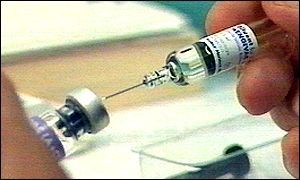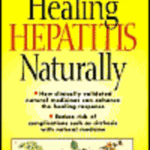About The Disease HiB
HiB, or Haemophilus influenza type b, used to be the most common cause of meningitis in children between 6 months and 4 years of age. Some cases of bronchitis, sinusitis and middle-ear infection are also caused by HiB. Presence of the disease is determined by a spinal tap, in addition to blood and urine tests.
The disease used to be considered rare until the late 1940’s, when adults saw an increase in the disease. The leading theory as to why revolves around the use of antibiotics, since many of the common types used to treat the disease are no longer effective against it. Scientists hypothesize that the organism had mutated and become resistant.
In 1984, there were an estimated 20,000 cases of HiB infection (12,000 became meningitis) in the United States. Ten years later, after the introduction of the HiB Vaccine, there were 1,174 cases reported (source link )
The HiB Vaccine
Despite the evidence that this vaccine is quote effective, some parents have a difficult time deciding whether or not to give their child this particular vaccine. Parents can use the manufacturer’s package insert to help them make this important decision. A package insert is included with all medications and provides a drug’s description, intended purpose, contraindications (circumstances under which the drug should not be administered), side effects, and dosages.
Merck’s Liquid PedVaxHIB
One brand of the HiB vaccine is PedVaxHIB by Merck. The package insert can be viewed in full by clicking here.
Ingredients of the HiB Vaccine
The vaccine is purified with the chemical ethanol, which has gained recent fame as being an alternative auto fuel. It is an alcohol derived from corn or any other starchy vegetable or plant such as potatoes or wheat. According to the University of Wisconsin’s “Science is Fun” page on ethanol, “Ethanol is toxic, and the body begins to dispose of it immediately upon its consumption. Over 90% of it is processed by the liver. In the liver, the alcohol dehydrogenase enzyme converts ethanol into acetaldehyde, which is itself toxic…
Ethanol acts as a drug affecting the central nervous system. Its behavioral effects stem from its effects on the brain and not on the muscles or senses themselves. It is a depressant, and depending on dose, can be a mild tranquilizer or a general anesthetic. It suppresses certain brain functions. At very low doses, it can appear to be a stimulant by suppressing certain inhibitory brain functions. However, as concentration increases, further suppression of brain functions produce the classic symptoms of intoxication: slurred speech, unsteady walk, disturbed sensory perceptions, and inability to react quickly. At very high concentrations, ethanol produces general anesthesia; a highly intoxicated person will be asleep and very difficult to wake, and if awakened, unable to move voluntarily.”
Each dose contains 225mcg of aluminum hydroxide, primarily used for “the relief of heartburn, sour stomach, and peptic ulcer pain and to promote the healing of peptic ulcers,” according to Medline Plus. Side effects include “constipation, loss of appetite, confusion, unusual tiredness or discomfort, and muscle weakness.
HiB Vaccine Efficacy
The HiB vaccine package insert cites studies placing the vaccine’s efficacy at approximately 93%.
Earlier versions of the HiB vaccine were found by the Institute of Medicine to suppress the immune system for seven days after the injection was administered, leading to several cases of HiB infection. The National Vaccine Information Center elaborates: “The conjugate Hib vaccines now being used are thought to be more quickly effective, leaving children less vulnerable to Hib disease shortly after vaccination. However, the IOM report stated that ‘Because immunization with Hib vaccines may lead to a transient decrease in protective antibody levels, unimmunized children at increased risk of colonization (household or day-care contact with individuals with recent cases of Hib infection) may require special [protective] measures.’ One Hib vaccine manufacturer states, ‘There have been rare reports to the Vaccine Adverse Events Reporting System (VAERS) of Hib disease following full primary immunization.’…
In 1995, out of 74 Hib disease cases where age and vaccination status were known, 41 or 55 percent had received at least one Hib shot; 22 were appropriately vaccinated for their age; and 18 had completed the primary series.”
The Meningitis Bacteria
The HiB vaccine may indeed be effective against this particular strain of bacteria, however, meningitis can be caused by several different strains. Many people walk around with meningitis bacteria living in their noses and throats and rarely develop the disease. Most of us develop natural immunity this way. When we see the numbers for the HiB vaccine, we are seeing numbers for HiB-related meningitis, not all types of meningitis.
In her book Just a Little Prick, Hilary Butler reports that “In Finland, Belgium and Sweden after the use of the HiB vaccine, haemophilus declined, and the rates of invasive pneumococcal infections increased.”(147) American researchers reported similar results. In her native New Zealand, a unique form of Meningococcal B emerged to fill the gap left behind by Haemophilus.
HiB Vaccine Precautions
The package insert warns that epinephrine and other relevant treatments should be available in case of anaphylactic reactions.
As previously noted, the insert also warns that “cases of HiB disease may occur in the week after vaccination, prior to the onset of the protective effects of the vaccine.”
Included is this statement, also found on other vaccine package inserts: “Liquid PedVaxHIB has not been evaluated for its carcinogenic, mutagenic potential or impairment of fertility” and “it is also not known whether [the vaccine] can cause fetal harm when administered to a pregnant woman or can affect reproduction capacity.” This means no one knows if this vaccine causes cancer or makes people sterile, and no one has done any studies to find out.
HiB Vaccine Adverse Reactions
It is difficult for anyone to determine adverse reactions to the HiB vaccine because it is almost never given by itself. Usually the infant or child also received the DTaP (Diptheria, Tetanus and Pertussis) and the IPV (Injected Polio Vaccine) at the same visit.
The HiB vaccine package insert does list of reported adverse reactions, but is quick to point out this conundrum or proving causality when other vaccines were also given. The following is their list:
Irritability
Sleepiness
Pain/soreness
Swelling
Erythema (redness and inflammation)
Unusually high-pitched or prolonged crying
Diarrhea
Vomiting
Otitis media (middle ear pain)
Rash
Upper respiratory infection
Urticaria (hives)
Thrombocytopenia (blood disease characterized by low platelet count)
Early onset HiB disease
Guillain-Barre Syndrome (A temporary inflammation of the nerves, causing pain, weakness, and paralysis in the extremities and often progressing to the chest and face. – American Heritage Dictionary)
Tracheitis
Seizures
Lymphadenopathy (swollen lymph nodes)
Angioedema
Injection-site abscess
A search in the Vaccine Adverse Events Reporting System brings up over 30,600 reports. 7,000 of them are just for January 2007 to May 2007. 227 of those 7,000 recipients died. Again, since the HIBV is always given with other vaccines, it is impossible to determine which vaccine (or if it was the overall combination) caused these reactions.
Preventing HiB and Meningitis
Since many people walk around with these bacteria already in their bodies, it is worth noting what causes some children and adults to develop disease but not others. The primary cause is a weak immune system, which occur more frequently in those who are not fed well (with a nutritious diet low in sugars and fats), those living in substandard housing, overcrowding, smoking, and for children, lots of hours spent with other children in daycare.
According to the HiB vaccine package insert, risk factors for children under 5 include “daycare attendees, lower socio-economic groups, blacks (especially those who lack the Km(1) immunoglobulin allotype), Caucasians who lack the G2m(n or 23) immunoglobulin allotype, Native Americans, household contacts of cases, and individuals with asplenia, sickle cell disease, or antibody deficiency syndromes.
States Hilary Butler in her book, Just a Little Prick, “Vaccines are a cheaper option than real preventive medicine. ‘Jabs rushed in to save a gazillian children,’ would sound much more heroic than “Manukau poor now have warm, dry housing and good food.’ Using vaccines does nothing to get rid of bad nutrition, anaemia, obesity, overcrowding, bad housing, stress, despair, dislocation, social discord, drug abuse, smoking and alcoholism…A fence at the top of the cliff is better than an ambulance at the bottom.”
There is also ample evidence that breastfeeding helps protect infants from developing an HiB infection. Click on this link for a list of research studies and their conclusions supporting this.
Additional Sources:
www.nvic.org
www.whale.to/vaccines.html
Butler, Peter and Hilary. Just a Little Prick. Auckland: Robert Reisinger Memorial Trust, 2006.





